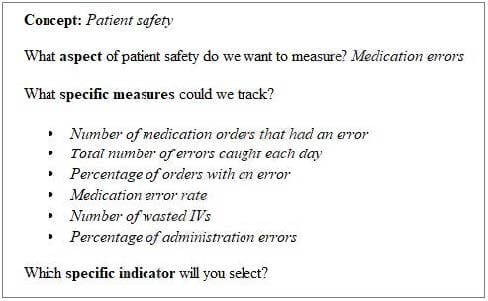Exam Details
Exam Code
:CPHQExam Name
:Certified Professional in Healthcare QualityCertification
:NAHQ CertificationsVendor
:NAHQTotal Questions
:195 Q&AsLast Updated
:Jul 17, 2025
NAHQ NAHQ Certifications CPHQ Questions & Answers
-
Question 121:
You decided to interview ten patients in your emergency room on a given day and drew conclusions about your emergency services from these people. You have taken limited data and made a huge jump in logic.
This jump is known as:
A. Stereotyping
B. Over-generalization
C. Ecological fallacy
D. Quota sampling
-
Question 122:
_______________ is based on a simple principle-statistical probability. In other words, within a known population of size n, there will be a fixed probability of selecting any single element.
A. Probability sampling
B. Random sampling
C. Systematic sampling
D. Non-probability sampling
-
Question 123:
Sampling is a key that healthcare professionals need to develop. If a process does not generate a lot of data, you probably will analyze all the occurrences of an event and not need to consider sampling.
Sampling usually is not required when the measure is: (Choose two.)
A. A percentage
B. A rate
C. A step-by-step process
D. A strata
-
Question 124:
"A quality improvement team is interested in determining the percentage of medication orders that are delivered to nurses' stations within one hour of the order's receipt in the pharmacy. Before collecting data on this question, the team should determine whether it believes that this percentage could differ by floor, time of day, day of week, type of medication ordered, pharmacist on duty, or volume of orders received. If the team believes that one or more of these factors will influence the outcome, it should take steps to ensure that it collects the data relevant to these factors each time the pharmacy receives an order."
This example explains:
A. How stratification could be applied to pharmacy
B. Is there any need to sample the data
C. Targets and goals of measurement
D. Confidentiality issues in measurement
-
Question 125:
Stratification is the separation and classification of data into reasonably homogenous categories. It allows understanding of differences in the data caused by all of the following EXCEPT:
A. Day of the week
B. Time of the day
C. Type of order
D. Area of facility
-
Question 126:
In healthcare, many terms call for more precise operational definitions that how do an organization define
the terms such as:
(Choose two.)
A. Quick turnaround time
B. An accurate environmental compliance
C. A patient fall (a partial fall, a fall with injuries, or an assisted fall)
D. Surgical end time
-
Question 127:
This example shows the relationship between:

A. A concept and specific measures
B. Specific indicator and milestone
C. Specific measures and specific indicators
D. Effectiveness and concept
-
Question 128:
A more proactive posture would be to develop an organization-wide approach to quality measurement that meets both internal and external demands.
This approach is:
A. A task that should be completed at once
B. A task that should be done in chunks of improvement process
C. Not a task that can be completed once, rather a journey that has many potential pitfalls and detours
D. A task that should be completed through a series of related activities
-
Question 129:
The increased focus on and mandate for healthcare data place healthcare providers in a different situation than they have known in the past. Providers document such things and, unfortunately, many providers struggle to address the measurement mandate proactively, which leads organizations to assume a defensive posture when external organizations release the data.
Which of the following ways show/s the responses of provider in such cases? (Choose three.)
A. The data are old (typically one or two years) and do not reflect our current performance
B. The data are not stratified and do not represent appropriate comparisons.
C. Our patients are similar those at the other hospitals in our comparison group (i.e., no risk adjustments were made to the data).
D. We can move in a better way without doing competition with others
-
Question 130:
During improvement in healthcare system, because of a combination of technical complexity, system
fragmentation, a tradition of autonomy, and hierarchical authority structures, overcoming the "daunting
barrier to creating the habits and beliefs of common purpose, teamwork and individual accountability"
necessary for spread and sustainability will require:
(Choose two.)
A. Continual focus
B. Commitment
C. Focus to maintain benchmark levels
D. Right time
Related Exams:
Tips on How to Prepare for the Exams
Nowadays, the certification exams become more and more important and required by more and more enterprises when applying for a job. But how to prepare for the exam effectively? How to prepare for the exam in a short time with less efforts? How to get a ideal result and how to find the most reliable resources? Here on Vcedump.com, you will find all the answers. Vcedump.com provide not only NAHQ exam questions, answers and explanations but also complete assistance on your exam preparation and certification application. If you are confused on your CPHQ exam preparations and NAHQ certification application, do not hesitate to visit our Vcedump.com to find your solutions here.